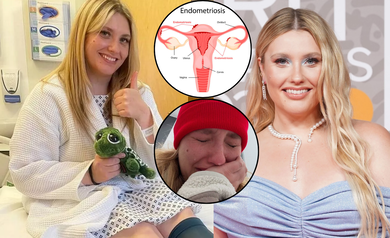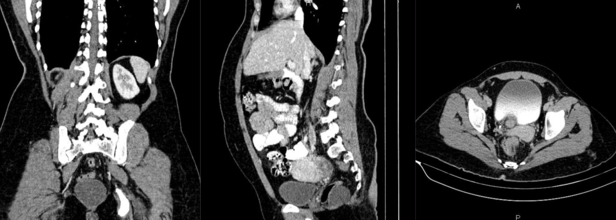- Health Conditions A-Z
- Health & Wellness
- Nutrition
- Fitness
- Health News
- Ayurveda
- Videos
- Medicine A-Z
- Parenting
- Web Stories
Can Skipping Breakfast Affect Your Cholesterol?

Skipping Breakfast And Health (Credit-Canva)
For some people, breakfast might seem like a waste of time when they're rushing in the morning to get to work. If they have breakfast at all, it might be a quick cup of coffee during the commute or a bagel during the morning meeting. People think it to be a nuisance and do not like waking up early to eat breakfast and think they would rather spend more time sleeping. Mostly they believe they can make it up later by eating a heavy lunch.
People following an intermittent fasting plan might always skip breakfast, opting to wait until much later in the day for the first meal. But how does it affect your body?
Body Cholesterol and Breakfast Connection
Research suggests that skipping breakfast may lead to an increase in LDL cholesterol. A 2020 meta-analysis published in Obesity found that individuals who skipped breakfast had a 9-point higher LDL cholesterol level compared to those who ate breakfast, despite potential weight loss benefits. However, experts offer a different perspective. They suggest that the temporary increase in LDL cholesterol observed in breakfast skippers may not necessarily pose a significant risk to cardiovascular health. The body may mobilize stored lipids during fasting periods, leading to a temporary rise in cholesterol levels.
According to the National Library Of Medicine, while many participants indicated that skipping breakfast can have a big impact on their body weight reduction, the study showed that skipping breakfast has no major impact on your body weight. While LDL cholesterol levels were found to be higher in breakfast skippers, no significant changes were detected in other cardiometabolic risk factors such as blood pressure, total cholesterol, HDL cholesterol, triglycerides, inflammatory markers, insulin resistance, or hunger hormones. In conclusion, while breakfast skipping may contribute to modest weight loss in the short term, it may also lead to an increase in LDL cholesterol.
What Role Does Diet Play Here?
It's important to note that the quality of one's overall diet plays a crucial role in cholesterol levels and overall health. Studies have shown that individuals who eat breakfast tend to make healthier food choices throughout the day, including more fruits, vegetables, and whole grains. Conversely, those who skip breakfast may be more likely to consume unhealthy snacks and processed foods. A 2013 study showed among the 5316 participants, 23.8% skipped breakfast (BS), 16.5% consumed ready-to-eat cereals (RTEC), and 59.7% consumed other breakfasts (OB). Compared to breakfast skippers, RTEC consumers were significantly less likely to be overweight or obese, have abdominal obesity, elevated blood pressure, high cholesterol levels, low HDL cholesterol, or insulin resistance. Similarly, compared to those who consumed other breakfasts, breakfast skippers were more likely to have elevated cholesterol levels and low HDL cholesterol.
Finding The Right Balance
Ultimately, the decision to eat or skip breakfast is a personal one. Factors such as individual metabolism, activity levels, and personal preferences can influence whether breakfast is necessary. However, it's essential to be mindful of the potential impact on cholesterol levels and overall health. For those who choose to eat breakfast, opting for a balanced meal rich in fiber, protein, and healthy fats can help maintain blood sugar levels, boost energy, and support overall well-being.
Pop Star Ella Henderson Talks About Her Painfully 'Devastating' Diagnosis After Years Of Struggle

Credits: Instagram/ellahendersonofficial
Pop star Ella Henderson’s voice has filled arenas across the UK and beyond, but her latest message isn’t a chart-topper—it’s a powerful, deeply personal disclosure that’s resonating with millions. In a recent Instagram video, the 29-year-old singer revealed she was diagnosed with endometriosis earlier this year, after struggling for years with intense stomach bloating, pelvic pain, and emotional distress.
What Henderson didn’t expect was how long and difficult her journey to a diagnosis would be—and how sharing it would help shine a spotlight on one of the most misunderstood chronic conditions affecting people assigned female at birth.
“For the last few years, it's been a bit of a rollercoaster, to say the least,” Henderson confessed in her video. While fans watched her perform and thrive in the spotlight, behind the scenes she was quietly battling unrelenting symptoms. She describes how she was plagued by stomach bloating, pelvic discomfort, and deep emotional turmoil—made worse by not being taken seriously.
“I thought at one point that this was just all in my head,” she said. “I wasn’t really believed.”
For many with endometriosis, that experience is painfully familiar.
After undergoing a laparoscopy—a minimally invasive surgical procedure used to diagnose and sometimes treat endometriosis—Henderson received confirmation that she wasn’t imagining anything. The procedure uncovered severe endometrial growths and scarring behind her uterus, affecting her bladder and bowel.
“Although the diagnosis was devastating, it was also validating,” she explained. “I could finally take control of my body.”
That moment of clarity often takes years for patients. According to Endometriosis UK, it takes an average of eight to nine years from symptom onset to diagnosis in the UK. Many people, like Henderson, suffer in silence, cycling through misdiagnoses while trying to manage what often becomes debilitating chronic pain.
What makes it harder is that some people have severe symptoms, while others may be asymptomatic. The severity of symptoms doesn't always align with the extent of the disease. Henderson spoke openly about how her physical struggles snowballed into mental health challenges. Living with constant pain, while being dismissed or misdiagnosed, took a toll.
“Not being believed led to periods of depression, isolation, and anxiety,” she said. “If health practitioners had recognised my symptoms sooner, all that might have been spared.”
This psychological burden is common among endometriosis patients. According to studies, mental health disorders, including anxiety and depression, occur at higher rates in those living with chronic pain from endometriosis. And yet, mental health support is rarely part of routine treatment plans.
Though there’s no cure for endometriosis, Henderson’s surgery helped ease her symptoms significantly. She’s now committed to long-term management, including lifestyle adjustments, possible hormonal therapy, and regular medical monitoring.
She’s also using her platform to advocate for awareness. In partnership with Endometriosis UK, Henderson is promoting tools to help others recognize symptoms early. One tool allows users to check symptoms in under a minute and generate a personalized letter for their healthcare provider—a small step that could dramatically shorten the diagnostic timeline for many.
Emma Cox, CEO of Endometriosis UK, praised Henderson’s courage in going public:
“Ella’s willingness to share her story will no doubt help others in their diagnosis journey,” she said. “Highlighting the significant and detrimental impact the condition can have on all aspects of someone’s life.”
And she’s right, endometriosis affects 1 in 10 women and people assigned female at birth—that’s over 1.5 million in the UK alone. Yet, stigma, misinformation, and delays in care are still the norm.
What is Endometriosis?
Endometriosis is a medical condition in which tissue that resembles the lining of the uterus grows outside the womb. These renegade cells are able to adhere to organs such as the ovaries, bladder, bowel, or even below the pelvis, responding to hormonal shifts similarly to uterine tissue—thickening, deteriorating, and bleeding with every menstrual cycle but unlike during a normal period, this tissue has no place to go, leading to inflammation, scarring, organ damage, and extreme discomfort.
Symptoms are diverse but frequently include:
- Heavy or painful periods
- Pelvic pain that is chronic
- Discomfort during intercourse
- Bowel and urinary discomfort
- Inability to conceive
- Severe bloating, also referred to as "endo belly"
- Excessive fatigue
Types of Endometriosis
There are four primary forms of endometriosis:
Peritoneal (superficial): On the thin layer of the pelvis.
Ovarian (endometriomas): Ovarian cysts packed with old blood.
Deep endometriosis: Deep tissue like in the bowel or bladder.
Extra-pelvic endometriosis: Uncommon instances where lesions occur in the lungs or surgical incisions.
Associated conditions such as adenomyosis, in which endometrial tissue invades the uterine wall, tend to exist concurrently with endometriosis, further complicating diagnosis and treatment.
While treatment involves hormonal therapies, analgesics, physical therapy, and surgery in some cases, there is no silver bullet, and most patients have to try a series of methods before experiencing relief.
And though Ella's celebrity generates publicity, the struggle for recognition, treatment, and compassion is that of every woman, girl, and individual touched by this frequently hidden disease.
If you or someone you know is experiencing symptoms of endometriosis, don’t wait. Speak with a healthcare professional and explore resources like Endometriosis UK or the Endometriosis Foundation of America because the sooner we stop doubting women’s pain, the sooner we start healing.
How A Painful Discharging Lesion In Back Turned Out To Be a Rare Taligut Cyst

Credits: Radipaedia
For over eight years, a 37-year-old, Delhi-based woman silently battled a painful, discharging lesion on her lower back. The condition, located in the sacrococcygeal region near her tailbone, was repeatedly mistaken for a common infected sinus or abscess.
Despite undergoing multiple incision and drainage (I&D) procedures, the lesion persisted—causing chronic pain, swelling, and periodic discharge.
Strikingly, the patient exhibited no symptoms related to digestion or bowel movement, further complicating the clinical picture. The misdiagnoses and unsuccessful treatments continued for years, with little improvement in her quality of life. That was until a recent evaluation led to a breakthrough discovery.
How Did The Diagnosis Happen?
The patient’s condition took a dramatic turn when her case was referred to Redcliffe Labs, which is a pan-India diagnostic services provider. The consultant pathologist, Dr. Mayanka Seth, led the team that reviewed the case with a renewed perspective.
Initial clinical assumptions continued to point toward common conditions such as pilonidal sinus or subcutaneous abscess. However, upon detailed examination, the team noted that the lesion was unusually deep and showed no communication with the anal canal. This prompted surgical intervention for complete removal of the cystic structure.
Subsequent histopathological analysis confirmed a rare and unexpected diagnosis: subcutaneous tailgut cyst—a congenital lesion that arises from embryonic remnants of the hindgut.
While tailgut cysts are rare in themselves, their typical location is deep within the pelvis. In this case, the cyst had developed just under the skin near the tailbone, making it an extremely rare presentation and a diagnostic challenge.
The case also been documented and published in the Indian Journal of Case Reports. This has contributed to medical literature on rare congenital anomalies.
Treatment and Complete Recovery
Following the complete surgical excision of the cyst, the patient experienced relief from her chronic symptoms. With no further discharge, pain, or swelling, her quality of life also improved.
“This case throws light on the importance of considering rare congenital lesions when conventional treatments fail to provide results,” said Dr. Mayanka Seth. “Subcutaneous tailgut cysts are easily misdiagnosed due to their resemblance to more common infections in the sacrococcygeal area. Accurate diagnosis often hinges on thorough clinical evaluation and timely histopathological examination.”
What Are Tailgut Cysts?
As per Radippaedia, a peer-reviewed, open-edit radiology resource, Taligut cysts, also referred to as retrorectal cystic hamartomas are rare congenital growths believed to develop from remnants of the embryonic hindgut. These lesions are typically found in the retrorectal or presacral space, although extremely rare cases have been reported in unusual locations such as the perirenal region or subcutaneous tissues.
Who Is Affected?
Tailgut cysts show a strong female predominance and are most commonly diagnosed between the ages of 30 and 60. However, they can occur at any age.
Symptoms
In many cases, tailgut cysts are discovered incidentally during imaging or unrelated examinations. When symptoms do occur, about half of the patients report perirectal discomfort, which may include pelvic pain or constipation.On gross examination, these cysts usually appear as multiloculated (multi-chambered), thin-walled masses with a shiny internal lining. They are typically filled with mucoid (gel-like) material. A distinguishing feature of tailgut cysts is their varied epithelial lining, which may include ciliated columnar cells, mucin-secreting columnar epithelium, transitional epithelium, and squamous cells.
These lesions generally measure a few centimeters in size. Occasionally, they may be associated with defects in the sacral bone or exhibit internal calcifications.
Microstress Is Real: These Tiny Terrors Are Quietly Wrecking Your Mental Health

We often associate stress with dramatic breakdowns, overwhelming work, or emotional turmoil. But what if the real danger lies in the tiny, everyday pressures we don’t even notice building up?
What Is Microstress and Why It Matters
“Stress is the most notorious yet underplayed disease,” says Alma Chopra, motivational speaker, disability rights activist and life coach. “It’s often thought of as an emotional onslaught that makes it difficult to function. But stress isn't just limited to our emotions; we can also become physically stressed from a chronic illness or an injury.”
Alma explains that microstresses are small, fleeting moments of stress that sneak into our daily routines. “Sometimes it creeps up through daily pressures until we hit our melting point. These are called microstresses,” she shares. These could include running late for a meeting or scrolling social media right after waking up. They may feel harmless in the moment but layer up to become chronic stress over time.
How Microstresses Mess With You
“These reactions feel minor and temporary, so they're quickly replaced by the next task or eased by a smiling face or a piece of cake,” says Alma. But the danger lies in how these minor stressors build up over time. “We tend to ignore these micro-stresses, but over time, they build low-level tension that will affect your sleep, focus, mood and health.”
Alma lists common microstressors and their effects:
- Alarm: “Jerks the body into a sudden state of alertness, disrupting natural rest.”
- Checking work email: “Doing this first thing in the morning puts us into a state of panic and anxiety.”
- Scrolling social media: “Overstimulates the brain and drains mental focus.”
- Confrontations: “Force us to deal with discomfort we’re not emotionally prepared for.”
- Unfinished tasks: “Juggling a long list without breaks builds pressure and leads to burnout.”
- Bruising your knee: “Even minor damage to the bone or soft tissue creates physical stress in the body.”
Alma advises recognising patterns and creating little routines to manage stress before it spirals. “Begin by recognising patterns, checking what drains you and creating little routines to relieve stress,” she says. “Start taking short breaks, creating boundaries and incorporating rejuvenating practices into your day.”
When Lifestyle Fuels Microstress
Sukirti Midha, spiritual wellness coach and founder of Sukh Yog, points out that microstress is a lifestyle issue. “Micro stress, as the name suggests, is small things we face as a working person or a householder. No gender age or designation we are discussing here; it’s the same for all,” she says.
According to Sukirti, “It’s in our lifestyle now; still, we are not aware of it.” She adds that people often don’t even feel it building up. “Do you think it happens overnight? No, nothing happens overnight except the sun comes out,” she jokes, adding a serious note that many people today don’t even see the sunrise, contributing to deficiencies like vitamin D.
Sukirti points out how society’s pressure to look good and maintain appearances feeds microstress. “When one gets conscious about looks, which include not only clothes but also touch-ups, make-up and hair. It’s not social pressure but created by us only.” She questions why people rely on external validation to feel good. “Why is it always important to look good to feel good?”
She also flags social media’s impact. “Many social media applications have filters to make you feel more beautiful and younger, which gives you plenty of stress when we look back in a basic mirror.” Comparing ourselves to others’ curated lives triggers a subtle but ongoing sense of inadequacy.
“Maintaining a status is a pressure these days,” she says. “Always remember as we shift from past to present or future to present, we learn happiness is about you & not the things or society status.”
The Simple Way Out
Both experts agree that while microstress can’t always be avoided, we can manage it better by slowing down, drawing boundaries and valuing simplicity. As Sukirti says, “Staying away from microstress isn’t easy, but preferring solace is an easy way out.”
© 2024 Bennett, Coleman & Company Limited




